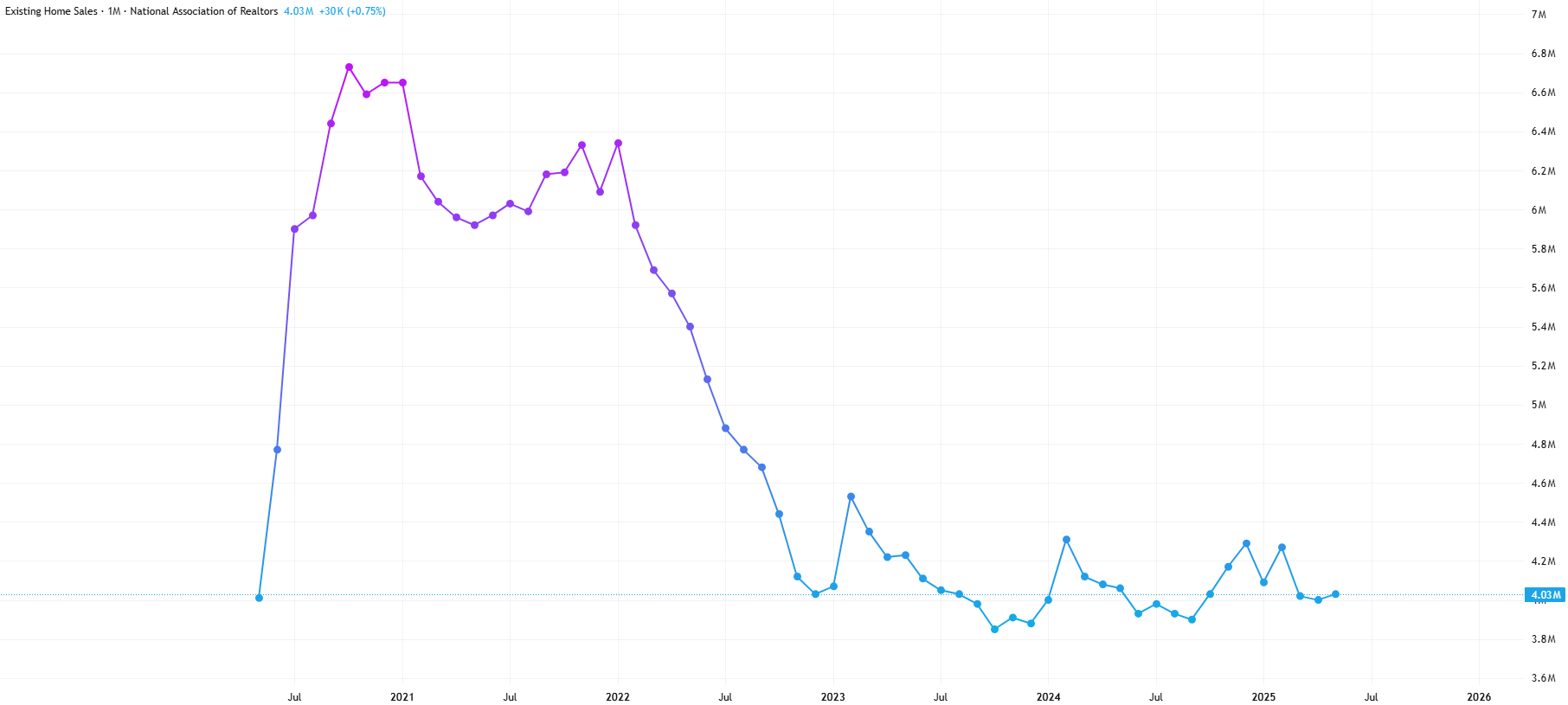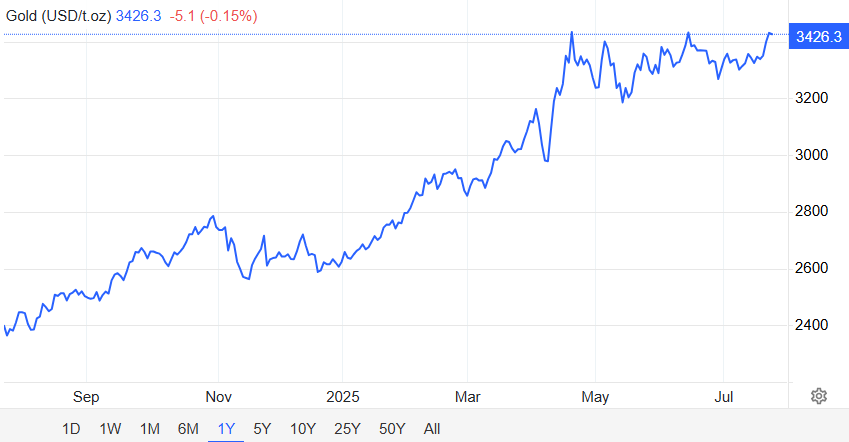With market eyes firmly fixed on the latest US Existing Home Sales release, traders and analysts are preparing for a data print that could sway sentiment across gold, platinum, equity indices such as the Nasdaq, and the US dollar. As the housing sector contends with elevated mortgage rates and fluctuating demand, today's figures are poised to offer crucial direction for risk appetite and safe-haven flows alike.
Latest Snapshot: US Existing Home Sales and Housing Trends

The US housing market has been under intense scrutiny in 2025. The most recent data from the National Association of Realtors showed existing home sales fell sharply by 5.4% in June to an annualised rate of 3.89 million units, missing consensus estimates and marking a notable drop from May's 4.11 million. This downturn came despite a moderate uptick earlier in the year—May's figure had briefly rebounded by 0.8% to 4.03 million.
-
Median existing home price in June: $426,900 (a new record, up 4.1% from June 2023)
-
Inventory: Rose to a 4.1 month supply, equivalent to 1.32 million units (previously 3.7 months supply)
-
First-time buyer share: Slipped to 29% in June, down from 31% in May
-
Interest rates at closing: Remained above 7%, sustaining affordability pressures
Days on market: 22 (average, down from 24 in May)
Regional performance was weak across the board:
-
Northeast: -2.1% from May, annualised rate 470,000
-
Midwest: -8% from May, annualised rate 920,000
-
South: -5.9% from May, annualised rate 1.76 million
West: -2.6% from May, annualised rate 740,000
Why the Existing Home Sales Data Matters: Macro Perspective
Existing Home Sales data is a highly-watched proxy for US economic health. Changes in this report ripple through markets as they signal shifts in consumer confidence, credit availability, and the effectiveness of monetary policy settings. Persistent high rates—recently locking 30-year mortgages between 6.5% and 7%—continue to restrict activity and affordability, even with rising inventory providing some relief to buyers.
Market Impact Analysis

Gold
Historically, disappointing housing data boosts gold as investors rotate into safe-haven assets. However, recent patterns show gold holding above $2,400/oz despite lacklustre sales, indicating that other factors (like Fed rate expectations and geopolitical tension) are also in play. If today's data falls significantly below consensus, gold could see renewed upside as stagflation fears rise.
Platinum
Platinum's industrial uses connect it to broad economic growth and demand. Weak home sales typically signal softer economic activity, potentially limiting platinum gains relative to gold. Earlier this year, platinum lagged gold during housing slowdowns as construction and industrial demand cooled, and this dynamic may persist if the reported sales print disappoints.
Nasdaq
The Nasdaq—dominated by tech and growth shares—tends to respond favourably to signs of consumer strength. Today's release is especially closely watched as recent sessions have seen choppy trading: the Nasdaq staged a brief rally but stalled as home sales resumed a downtrend. A sharp miss could prompt profit-taking, while a positive surprise may reinvigorate market optimism.
US Dollar
A strong home sales print usually strengthens the dollar, reflecting economic resilience and supporting hawkish Fed policy expectations. Conversely, further softness in housing may pressure the greenback lower as markets position for possible rate cuts in September or October, given the ongoing impact of elevated borrowing costs on household activity.
What To Expect From Today's Release
Consensus expectations hover around an unchanged or modestly lower sales rate from the previous 3.89 million units. However, inventory has climbed and price growth appears to be cooling across several regions. Markets will closely examine:
-
Magnitude of the surprise: A steep miss could rattle risk assets and buoy gold; a stronger than expected reading might lift stocks and the USD but pressure safe-haven metals.
-
Forward-looking signals: Inventory levels, price reductions, and days on market trends provide clues about Q3 activity.
Impact on Fed trajectory: If poor data further hurts affordability, calls for a September rate cut may amplify, altering the bond yield and dollar outlook.
Scenarios

Housing Market Outlook: Remainder of 2025
Most analysts expect modest home price gains in 2025, with consensus forecasts for national home price appreciation between 2.5% and 4.4% for the full year. Persistently high rates and stubborn inflation remain the primary headwinds. Inventory is rising modestly, and with one-third of sellers cutting prices, buyers face a slightly more favourable environment—yet affordability challenges persist.
The next leg of market direction will likely depend on a mixture of incoming housing data, Federal Reserve commentary, and shifts in broader risk sentiment. As today's existing home sales numbers land, traders across asset classes should be prepared for cross-asset volatility and adjust positioning in line with developing trends.
Disclaimer: This material is for general information purposes only and is not intended as (and should not be considered to be) financial, investment or other advice on which reliance should be placed. No opinion given in the material constitutes a recommendation by EBC or the author that any particular investment, security, transaction or investment strategy is suitable for any specific person.























